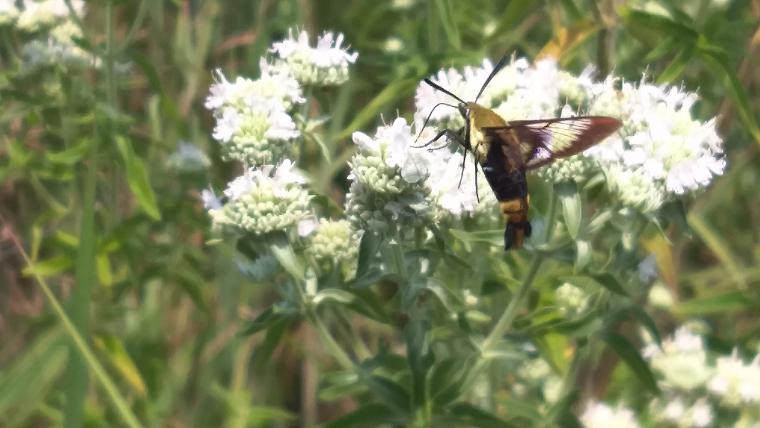Celebrating the hummingbird moth during National Moth Week, July 23-31.
KANSAS CITY, Mo. – The hummingbird moth is the Superman of the summer flower garden.
This supersized hoverer is a fascinating and perplexing pollinator, says University of Missouri Extension horticulturist and entomologist Tamra Reall. With a span of 2-6 inches, the moth looks like a miniature hummingbird. Its wings beat rapidly as it hovers over blooms, using its long proboscis to suck nectar from favorite flowers, including hosta blooms, bee balm, phlox, lantana, dwarf bush honeysuckle, snowberry, orange hawkweed, thistles, lilac and Canada violet.
When not in use, the proboscis tube coils against the underside of the moth’s head. When in use, it unfurls like a party noisemaker, says Reall. It also emits a gentle hum like a hummingbird as the moths flit from flower to flower.
These stout-bodied marvels fly mostly during the day, and feed in the day and evening hours in the eastern half of the United States.
Hummingbird moth is a nickname used for several different species of sphinx moths, including hawk moths, hummingbird clearwing moth, the common clearwing moth, white-lined sphinx moth and the titan sphinx. The adults of the tobacco and tomato hornworms are also sphinx moths and “are quite spectacular,” says Reall, “although their caterpillars can do some damage in the home garden and must sometimes be removed.”
The moths do not damage plants and require no treatment, says Reall.
Photo:
Hummingbird clearwing moth
Hummingbird clearwing moth. Photo by Tamra Reall, University of Missouri Extension.
